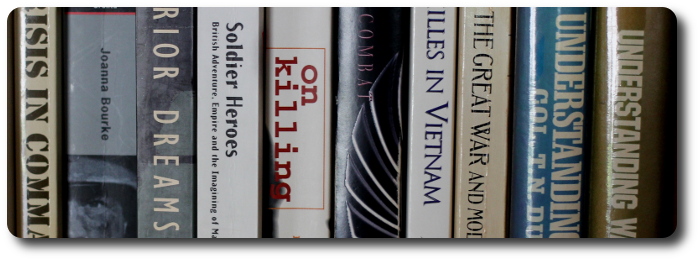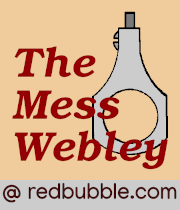
The Canadian Army Reading List - Version 1, September 2001
Introduction -
Doctrine -
Military Theory -
Canadian Military Heritage -
Military History -
Campaign and Battle Studies -
Leadership -
The Human Factor -
Technology -
Future Warfare -
Peacekeeping -
Politics, International Relations and Economics -
Ethics, Domestic Issues and Social Trends -
Fiction
Military Theory
General
Bassford, Christopher. Clausewitz in English: The Reception of Clausewitz in Britain and America, 1815 – 1945. New York: Oxford University Press, 1994.
Understanding how military theory spreads and is adopted can be as important as understanding the theory itself. Bassford traces how Clausewitz was accepted in Britain (and by extension, Canada) and the United States, and how the influence of his theories varied over time.
van Creveld, Martin. The Transformation of War. New York: The Free Press, 1991.
This book is based upon several papers written by the author dealing with the changes to military theory brought on by events of the post-Second World War world. Claiming that conventional war will abolish itself and that Clausewitzian theory is irrelevant, van Creveld examines who fights wars and why, how war is fought and what the future holds.
Clausewitz, Carl von. On War. Edited and translated by Michael Howard and Peter Paret. Princeton, NJ: Princeton University Press, 1984. ISBN 0-691-05657-9.
Carl von Clausewitz is generally viewed as the greatest writer on the art of war, and this masterpiece, although unfinished at the time of his death, is not only the most systematic study of war but also an important work of philosophy. This edition is the best translation and includes superb introductory essays by Peter Paret, Michael Howard and Bernard Brodie.
De Jomini, Baron. The Art of War. Westport: Greenwood Press, 1971. ISBN 0-8371-5014-0.
Jomini’s Art of War was the first attempt to interpret the Napoleonic era and its effect on warfare. Widely read and influential during his lifetime, this work was superseded by Clausewitz’ On War. Jomini should be read in conjunction with Clausewitz.
Manoeuvre Warfare
Hooker, Richard, Editor. Manoeuver Warfare: An Anthology. Novato, California: Presido Press, 1993. ISBN 0-89141-518-1.
A series of essays by American military writers on the theories of manoeuvre warfare and its introduction to the American Forces.
Lind, William S. Maneuver Warfare Handbook. Boulder, Col Westview Press, 1985.
An important guide to the basic principles behind manoeuvre warfare and the conduct of land operations.
Foch, Ferdinand. Des principes de la guerre. Paris, Imprimerie nationale Éditions, 1996, 533 p. (Acteurs de l’Histoire) La meilleure édition. Available in English.
The principles of war usually referred to today (economy of force, security, surprise, role of avant‑garde...) and its vocabulary are derived from essays published by Foch before the First World War and collected here.
Griffith, Paddy. Forward into Battle: Fighting Tactics from Waterloo to the near Future. Novat Presidio Press, 1990. ISBN 0-89141-413-4.
What wins battles, firepower or manoeuvre? These two combat functions are examined from the perspectives of the Napoleonic Wars, from that conflict to 1915, the alleged triumph of armour over infantry (1916 – 1945), the role of technology to 1973 and future trends.
Leonhard, Robert R. The Art of Maneuver: Warfare Theory and AirLand Battle. Novato (California), Presidio Press, 1991.
The most complete introductory guide to this topic. Discusses how true manoeuvre warfare theory has been applied throughout history and how manoeuvre principles can be applied to modern military operations.
McKercher, B.J.C. and Hennessy, Michael A., Editors. The Operational Art: Developments in the Theories of War. Westport, Conn: Praeger, 1996, ISBN 0-275-95305-X.
This book is a collection of essays from the Twenty-First Annual Military History Symposium held at The Royal Military College of Canada in 1995. They examine the legacy of the 1976 version of the U.S. Army’s field manual FM 100-5 Operations, which heralded a resurgence of “operational art”, on mainstream military thought by examining its historical and transnational antecedents. Topics include “Operational Art: Developments in the Theory of War”; “Operational Art and the Canadian Army’s Way of War”; and “The Revolution in Military Affairs: Its Implications for Doctrine and Force Development Within the U.S. Army. Authors include John English, Bill McAndrew, David Glantz and others.
Sun Tzu. Art of War. Translated with an introduction by Samuel B. Griffith. Foreword by B.H. Liddell Hart. London: Oxford University Press, 1963.
Written over 2000 years ago, Sun Tzu’s book is the first known study of the planning and conduct of military operations. It examines battlefield manoeuvres in light of relevant economic, political and psychological factors.
Logistics
Brown, Ian Malcolm. British Logistics on the Western Front: 1914 – 1919. Westport: Praeger, 1998. ISBN 0-275-95894-9.
There are far too few works on logistics and this book provides an excellent overview of the problems facing the British Army during the First World War. Beginning with how this topic was covered in pre-war staff college training, the study moves to examine the relationship of logistics, strategy and battle and the emergence of logistic “forecasting”.
Sinclair, Joseph. Arteries of War: A History of Military Transportation from Alexander the Great to the Falklands – and Beyond. London: Airlife, 1992. ISBN 1-85310-225-3.
Written by a former officer of Royal Engineers who specialized in railways and movement, this book begins with a historical overview of logistics, then discusses land, sea and air movement, the container revolution and new theories of littoral supply and movement.
Van Creveld, Martin. Supplying War: Logistics from Wallenstein to Patton. Cambridge, Cambridge University Press, 1977. ISBN 0-521-29793-1.
The formidable problems of movement and supply, transportation and administration as they relate to the major campaigns of the last two centuries, offering new insights into military history.
- The O'Leary Collection; Medals of The Royal Canadian Regiment.
- Researching Canadian Soldiers of the First World War
- Researching The Royal Canadian Regiment
- The RCR in the First World War
- Badges of The RCR
- The Senior Subaltern
- The Minute Book (blog)
- Rogue Papers
- Tactical Primers
- The Regimental Library
- Battle Honours
- Perpetuation of the CEF
- A Miscellany
- Quotes
- The Frontenac Times
- Site Map
QUICK LINKS
Commander Canadian Army's Reading List 2015
Infantry School Reading List
By Rank
By Subject
Canadian Army Reading List
Introduction
Doctrine
Military Theory
Canadian Military Heritage
Military History
Campaign and Battle Studies
Leadership
The Human Factor
Technology
Future Warfare
Peacekeeping
Politics, International Relations and Economics
Ethics, Domestic Issues and Social Trends
Fiction
